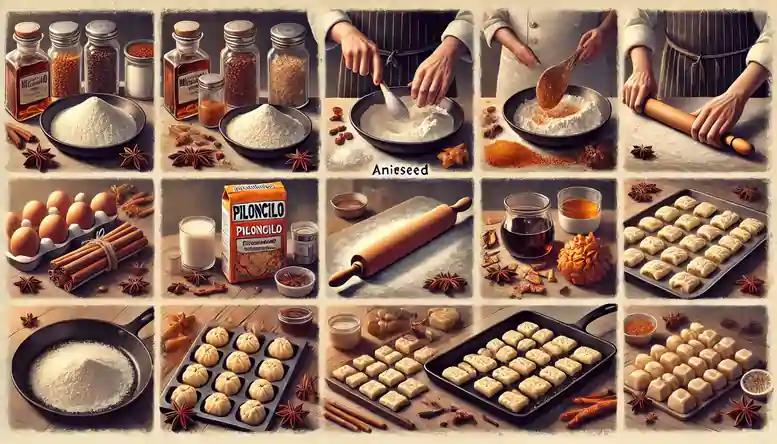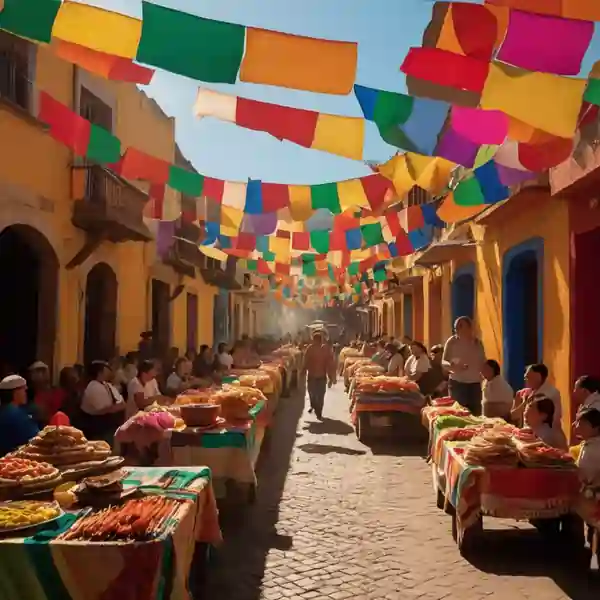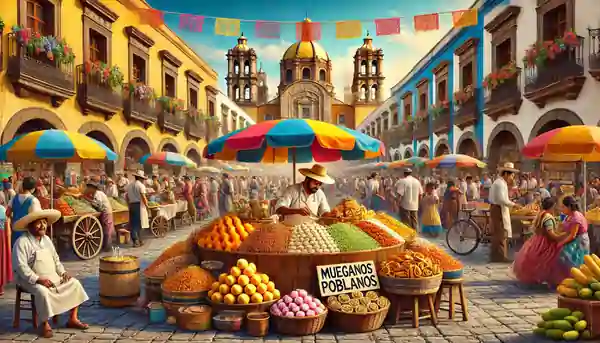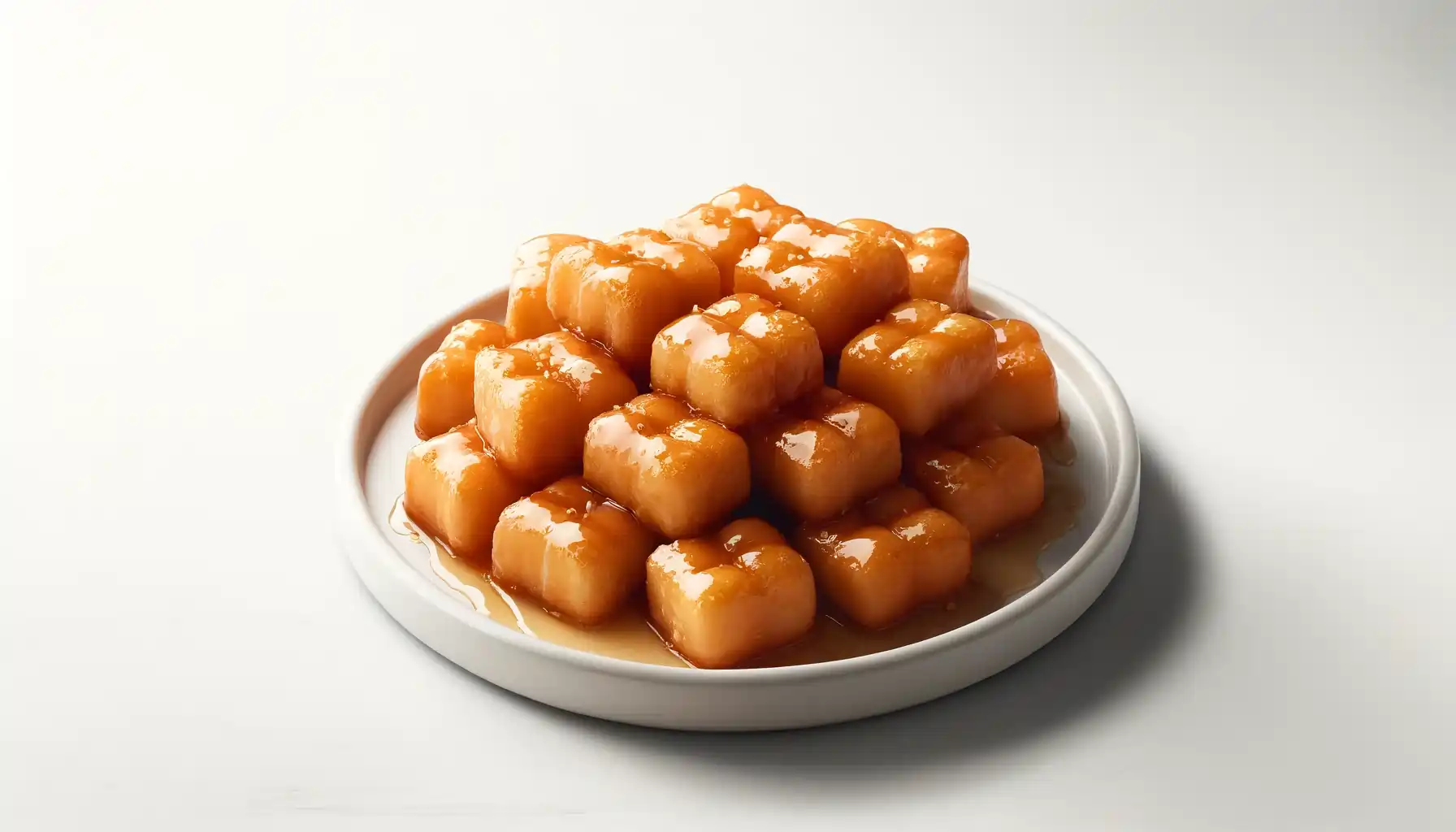Mueganos (A Mexican Snack Crafted with Tradition)
Hey there, fellow explorers and food lovers! If you’re curious about the world’s tasty treats, you’re in for a treat yourself! I’ve spent over ten years traveling and tasting my way through different cultures, and today, I’m excited to share a special snack from Mexico—mueganos. These sweet, crunchy bites are not just delicious; they tell a story of tradition and celebration.
Let’s dive into the charming world of mueganos, discovering their history, what makes them so special, and how you can make them at home. Whether you love trying new foods or enjoying unique travel experiences, this guide is here to bring a piece of Mexican culture right to your doorstep. Ready for a taste adventure? Let’s get started!
What Are Mueganos?
Mueganos are a traditional Mexican sweet that have been captivating the hearts and taste buds of locals and visitors alike for generations. These bite-sized pastries are made from a simple dough, fried till to crispy golden brown, and then coated in a sweet, syrupy glaze. The result is a heavenly snack that’s bursting with flavor and texture.
But mueganos are more than just a delicious treat – they’re a cherished part of Mexican culture. These little delights are often enjoyed during celebrations and gatherings, symbolizing the warmth, hospitality, and tight-knit community that’s so integral to Mexican life.
History and Origins of Mueganos

The origins of mueganos can be traced back to the vibrant culinary traditions of Mexico, particularly in the regions of Puebla and Tlaxcala. While the exact date of their creation is a bit of a mystery, some sources suggest these were first made early in 1905, while others point to the 1930s.
Anyways, mueganos are the result of a beautiful fusion of indigenous and Spanish culinary influences. The indigenous people of Mexico utilized local ingredients like corn and honey, while the arrival of the Spanish introduced new flavors and techniques. This melding of traditions gives mueganos their unique and irresistible character.
As you travel through Mexico, you’ll find that each region has its take on the classic Muegano. The “Mueganos Huamantlecos” of Tlaxcala, the “Muéganos de Huasca” of Hidalgo, and the legendary “Muéganos Poblanos” of Puebla all offer their delightful flavor of this beloved snack.
Ingredients and Preparation of Mueganos

The beauty of mueganos lies in their simplicity. These treats are made with just a handful of wholesome ingredients, including flour, aniseed, cinnamon, and the all-important piloncillo – a type of unrefined cane sugar that lends its rich, caramelized sweetness to the mix.
The preparation process is also simple, but it requires a skilled hand and a keen eye.
- First, the dough is kneaded together, incorporating the aromatic spices.
- Then, it’s rolled out and cut into small squares or rectangles.
- Next, the dough pieces are carefully fried until they puff up and turn a gorgeous golden brown, creating that irresistible crunch.
- Finally, the mueganos are coated in a glistening syrup by dissolving piloncillo in water.
This sweet, glossy finish is the crowning touch that makes these treats so mouthwatering.
The Cultural Importance of Mueganos

Mueganos are more than just a delicious snack – they’re an important part of Mexican culture and tradition. These small cakes are linked to gatherings, celebrations, and the friendly nature important to Mexican hospitality.
You’ll often find mueganos being sold by street vendors at bustling markets, town squares, and even outside of churches. They’ve become a favorite item, not just for their incredible taste, but for the way they bring people together.
Beyond their everyday presence, mueganos also play a significant role in some of Mexico’s most important cultural events. They’re a common sight at festivals like the Day of the Dead and Christmas, where they’re savored as part of the celebratory spread. In the town of Huamantla, the “Night When No One Sleep” festival even features mueganos vendors lining the streets, adding to the festive atmosphere.
I’ve seen this everywhere I’ve traveled, where sharing a meal can turn strangers into friends.
Best Places to Try Mueganos in Mexico

If you’re planning a trip to Mexico and want to experience the authentic taste of mueganos, there are a few must-visit destinations.
Puebla (Muéganos Poblanos)
First and foremost, the city of Puebla is known for its legendary “Muéganos Poblanos” which are made with a distinctive blend of lard, water, salt, flour, and aniseed. These little treats are a true local specialty, and you’ll find them being sold by street vendors throughout the city.
Muegano Mecca (Muéganos Huamantlecos)
Another is muegano mecca the town of Huamantla, in the state of Tlaxcala. Here, you’ll find the beloved “Muéganos Huamantlecos,” which are renowned for their delicate, honeycomb-like structure and the family-guarded recipes that have been passed down for generations.
How to Make Mueganos at Home
If you can’t make it to Mexico to try these incredible treats, don’t worry – you can easily recreate the magic of mueganos right in your kitchen. All you need are a few simple ingredients and a bit of patience.
Start by mixing the flour, aniseed, and cinnamon to create the dough. Knead it until it’s smooth and pliable, then let it rest for a bit. Next, roll out the dough and cut it into those signature squares or rectangles.
Now comes the fun part – frying the mueganos to crispy perfection. Carefully lower the dough pieces into hot oil and let them sizzle until they become golden brown. Drain them on a paper towel-lined plate, then get ready to make the sweet piloncillo syrup.

Dissolve the piloncillo in water, perhaps with a squeeze of lemon, and let the mixture boil gently until it reaches the perfect consistency. Then, carefully coat the fried mueganos in the syrup until every piece is covered. Let them cool, and voilà – you’ve got a batch of homemade Mexican treats that are sure to impress your friends and family.

Why You Should Try Mueganos on Your Next Trip to Mexico
As a travel lover, I recommend mueganos as part of your food adventure in Mexico. These little snacks are not only delicious, but they also show the richness of Mexican culture.
When you taste a Muegano, you’re not just enjoying a sweet treat – you’re connecting with the history, traditions, and hospitality that make Mexico such a special place.
So, the next time you find yourself exploring the bustling markets or charming plazas of Mexico, make sure to keep an eye out for the Muegano vendors. Strike up a conversation, learn the stories behind these snacks, and immerse yourself in the warmth and joy that makes Mexican culture so captivating.
Conclusion: Wrapping Up Our Sweet Adventure
Well, that wraps up our little adventure into the sweet, crunchy world of mueganos. I hope you’ve enjoyed discovering these delightful treats as much as I’ve enjoyed sharing them with you. Mueganos are more than just a tasty snack; they’re a vibrant part of Mexican culture, woven with the threads of tradition and community spirit.
Whether you try your hand at making these treats in your own kitchen or savor them in a bustling Mexican market, I hope this journey enriches your palate and inspires you to explore deeper into the flavors of the world. Remember, every bite is a story, and every flavor is a bridge to new experiences. So keep seeking out the stories behind the foods, and let those stories guide you to your next great adventure. Happy travels and even happier tastings!
FAQs
What is the meaning of Mueganos?
Mueganos are a traditional Mexican dessert consisting of small pieces of fried dough bonded together with a sweet syrup, often enjoyed during social and festive occasions.
What is piloncillo made of?
Piloncillo is made from boiled cane juice that is poured into molds and allowed to harden, known for its rich, molasses-like flavor.
Is piloncillo safe to eat?
Yes, piloncillo is safe to consume; it is a natural sweetener without artificial additives and is best used in moderation.
Is jaggery like piloncillo?
Jaggery is similar to piloncillo as both are made from sugarcane and have a caramel-like flavor, making them interchangeable in recipes based on regional availability.







